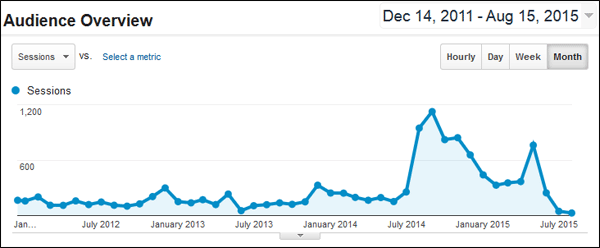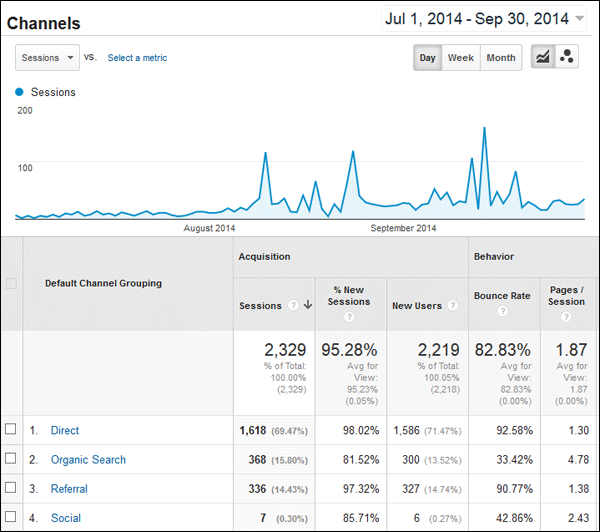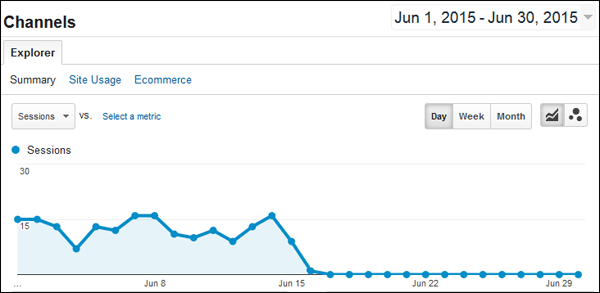
'Tis currently the season for jewelry stores to upgrade their websites in preparation for the upcoming holiday season.
Website upgrades are good, as long as you are upgrading to something better. Everything online can be tracked and learned from. Before upgrading your website you should be reviewing all your previous collected data to see how you can improve.
The defacto standard in website tracking is Google Analytics, a massive tracking and analysis system that makes all your tracked data easy to understand. Setting up Google Analytics on your website is easy. During the account setup process, they give you a JavaScript tracking code that needs to be placed in the header of all your website pages.
How Google Analytics Accounts Work
In order to create a Google Analytics account you first need to have a regular Google account. You need to log into your account then go to this URL: www.google.com/analytics.
However, before you do that you should think about the Google account that you will use for this setup. Here are the important questions to ask yourself before doing this:
- Will it be your personal Gmail account?
- Will it be a company email/Gmail account?
- Who will have password access to the account in the future?
- Will you eventually set up Google AdWords for the business?
The answers to the first two questions are the most important. Do you want to commingle your business information with your personal information? You might need to give your website programmer or consultant password access to your account; do you want to give them access to your personal account?
Google Analytics information is never deleted. All of your old collected information is relevant to future marketing analysis and website upgrades. Once you create your Google Analytics account, there are very few situations where you would create a replacement account.
Some Google Analytics Historical Examples
Here's an overview screen shot of a Google Analytics account from December 14, 2011 through August 15, 2015:

This is the typical report from a retail jeweler. You'll notice that the number of monthly sessions isn't very high. In fact, prior to July 2014 they only had about 5 visitors per day.
In July 2014, they started promoting their website in all their marketing and quickly jumped the number of visitors to an average of 10 per day.
In August 2014, they continued their promotions of their website and even ran a few large Sunday newspaper ads that got them a lot of attention three weekends in a row. That's why the graph shows an increased spike starting in August 2014.
They continued their offline ad campaign through September 2014, which continued to bring people to their website.
Here's a screen shot of the July 2014 - September 2014 time period showing the spikes relating to their offline ads.

You'll also notice that the report shows that direct traffic was accounting for 69% of their visitors. That means 69% of their visitors were directly typing their domain name into their web browser.
By comparison, my own mass tracking data shows that the average for retail jewelers is 25.5% for Direct traffic and 55.6% for Organic Search traffic.
Have you ever asked yourself if offline ads still work? This data shows that they still do. Of course, not all offline ads will work as well as the 3 successful Sunday ads shown here by the tallest 3 spikes on the above graph.
Losing Historical Benefits
Even though the above historical information might not seem relevant any more, there may be times in the future when it would be helpful to cross reference it to new marketing campaigns.
When you upgrade your website you have to refer back to your Google Analytics account and make sure that same JavaScript tracking is transferred to the new site. Each tracking code has a unique account identification number that allows you to carry all your old data forward.
Sadly, there are many times when websites are redesigned and launched without the existing tracking code. I have found this happens for one of these two main reasons:
* The retail jeweler doesn't know what account they used to create the Google Analytics account in the first place.
* The website programmer implements their own tracking code to make their life easier, without consulting the store owner.
Your Google Analytics account will report zero results as soon as you stop using the tracking code. This is what that looks like:

There's no reason to lose the ability to cross reference your historical data to your newly collected data. It really is a shame to allow this to happen, and when it does it's akin to refusing to learn from your successes and failures by simply erasing your company history.
The bottom line of today's Daily Golden Nugget is to always transfer your existing Google Analytics tracking code to your new website in order to maintain continuity of your business tracking data.








